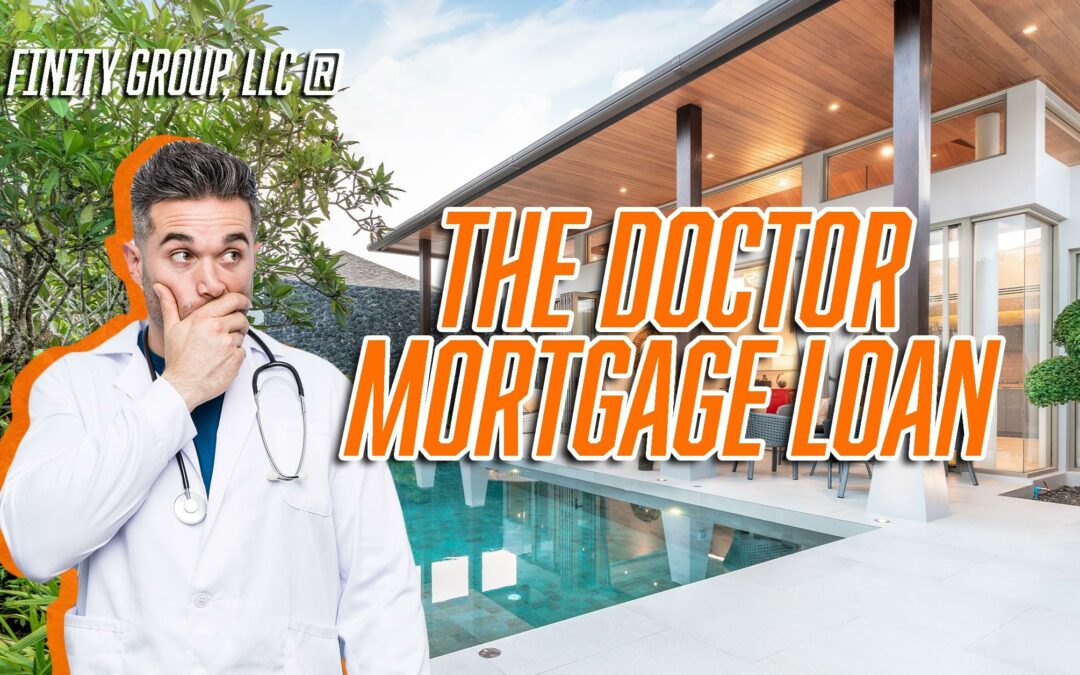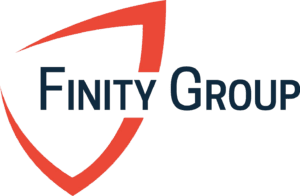Written by: Corey Janoff
Some of you have heard of the doctor mortgage loan or physician home loans. The physician loan is a special home loan for doctors that makes it easier for a doctor or dentist to get a mortgage without the customary 20% down payment. Banks often will bend the lending requirements in their doctor mortgage loan program as well, to allow for financing amounts larger than the conforming loan limits set by the FHFA for funding by Freddie Mac and Fannie Mae. We will dive into all things physician mortgages in today’s blog post.
How is a Doctor Mortgage Loan Different?
Many of you are aware that banks like to see a 20% down payment on a house for a conventional home loan. While it isn’t mandatory to put 20% down on most properties as your primary residence, if you don’t put at least 20% down, the bank will charge you for private mortgage insurance (PMI).
PMI is an additional fee you pay for insurance on your mortgage. The banks justification for it is that if you are putting less than 20% down, you are at higher risk of defaulting on your mortgage. After a lot of banks got burned by bad mortgages in the 2008 financial crisis, they have imposed stricter lending requirements. If you put less than 20% down on a home purchase, you have to pay for insurance on your mortgage so the bank can get reimbursed if you default on your loan. Makes sense.
Banks will often lend to people with less than 20% down. You can even put down as little as 5% on a conventional loan or 3.5% on FHA loans. I have seen some lenders even advertise for zero percent down home loans! The catch is often a higher interest rate, higher fees, and additional monthly PMI payments included in your mortgage loan payment. While you avoid the up-front cost of a down payment, you pay for it in other ways.
Enter home loans for doctors. Physician home loans are special lending programs offered by certain banks that will waive the PMI requirement when a doctor puts less than 20% down on a home purchase. This is huge, because it can potentially save you up to several hundred dollars per month on your mortgage payment, compared to a conventional mortgage loan.
Why do banks do this? Doctors are statistically great borrowers. They pay their mortgage on time and are rarely unemployed. As a result, physicians default on their mortgages at a much lower rate than the general population.
Banks also understand that when a doctor transitions from residency or fellowship into practice, their income takes a giant leap overnight. A physician may go from making $60,000/year through June 30th, up to $300,000/year starting July 1st. A $300k annual income is more than enough to afford the payments on a $500,000 mortgage loan, but it is unlikely that a doctor fresh out of residency will have saved up $100,000 in cash to afford a 20% down payment on the property.
Banks recognize this dilemma and still want your business. Therefore, some have have created special mortgage loans just for doctors to make is easier to get into the house you want with attractive mortgage terms.
Other Perks of Physician Home Loans
Some banks will ignore student loans in their debt-to-income calculations for their lending requirements in their doctor mortgage loan programs. While I don’t like this and think it is a disservice to physicians from a financial planning perspective, it is what it is.
When applying for a mortgage, most banks will “only” allow you to have up to 43% of your income go towards debt payments. For easy math, if your gross income is $240,000/year, or $20,000/month, a maximum of $8,600/month can go towards paying debt. If you have $800/month in car payments, $200/month minimum credit card payments, $2,000/month student loan payments, and $1,000/month for six years towards a timeshare you bought on credit, you will be eligible for a maximum monthly mortgage payment of $4,600.
By ignoring the student loans, a bank will let you have a mortgage with a maximum monthly payment of $6,600 in this example. That a lot more house you can buy.
Again, I don’t like this “perk”, because if you are making $240,000, you probably shouldn’t even be spending $4,600/month on a mortgage. I don’t like to see house payments exceed 20% of income and I generally advise people to keep their mortgage balance under two times their income. But, by ignoring student loans, it allows doctors to qualify for some mortgages that they wouldn’t otherwise be able to get, for better or for worse.
The only scenario I can see this being acceptable from the perspective of a financial planner is if your employer (or some other entity) is paying your student loans for you. Then I suppose you are not actually taking on the burden of the student loan payments.
Bottom line, if 43% of your income is going towards fixed minimum debt payments, you likely have a long uphill road ahead.
Banks also don’t typically have to conform to the jumbo loan limits with their physician mortgage loans. For most cities/counties, mortgage loans above $484,250 are considered “jumbo loans”, but some more expensive locations have higher limits. Jumbo loans are loans that don’t conform to the Freddie/Fannie guidelines and often have stricter requirements for qualification. If you try to get a conventional mortgage in jumbo territory, you often have to put more money down, pay a higher interest rate, do a first and second mortgage, or some combination thereof. Most home loans for doctors ignore these requirements.
Every bank with a doctor mortgage loan program is different, but some will lend up to $1,000,000 with as little as 0-5% down and no PMI. It’s unlikely you could get a conventional loan for $1,000,000 with only 5% down and no PMI. You would probably have to split a conventional mortgage into two loans, one fixed, one variable at a higher interest rate, if they would even allow for a 5% down payment.
Additionally, many physician loan programs allow you to use a signed employment contract as proof of income several months before you graduate residency or fellowship. This is very advantageous for physicians who are looking to close on a house when they enter practice. Since it often takes a couple of months to purchase a home, being able to get pre-approved and then formally approved for a mortgage before you even start earning that attending paycheck is huge.

Are Physician Loan Interest Rates Higher?
The answer to this question depends on the variables you are looking at. All else being equal, physician mortgage rates are usually slightly higher than the interest rate on a conventional mortgage. That being said, when you factor in the lack of mortgage insurance (PMI) and other benefits, it is usually less expensive to go with a physician loan.
Where people often get misled is when they compare the interest rate on a 20% down conventional loan to a 5% down doctor loan. Well, the interest rate on a mortgage with 20% down is going to be less than the interest rate on a mortgage with 5% down, all else being equal. The 5% down loan is more risk to the bank, so they are going to charge more for it.
A 5% down conventional loan compared to a 5% down physician loan from the same bank shouldn’t be much different. And remember, the doctor loan doesn’t have PMI, so the total cost should definitely be less.
What Banks offer Doctors Mortgage Loan Programs?
A few banks offer physician home loans in all 50 states, but the majority are regional. Every lender is different, and the terms of the doctor mortgage loan program will vary from bank to bank. Also, banks are constantly changing their programs – some stop offering physician loans, new banks start offering them. Reach out to us if you need help identifying banks in your area that offer special home loans for doctors.
In addition to finding a bank that has a doctor mortgage loan program, it is important to work with a loan officer who specializes in doctor mortgage loans. Some loan officers at banks that offer physician home loans aren’t even aware of the special financing available in their doctor mortgage loan program. Because it is a pretty niche market, many loan officers are simply unfamiliar with it, even if their bank offers it.
Refinancing into a Doctor Mortgage Loan
New mortgage loans are definitely more liberal in their lending requirements than refinances. However, if you have PMI on your current mortgage and don’t yet have 20% equity in your house, you can potentially refinance into a physician home loan to remove the PMI.
There’s that 20% number again. In order to refinance a typical mortgage, the loan generally cannot exceed 80% of the value of the home. For example, if a house is appraised at $500,000, a bank will typically only refinance a mortgage that is $400,000 or less.
As a physician, some banks will bend these rules as well. Similar to the new loan origination, the banks and terms are constantly changing. However, I have seen some banks that will refinance a mortgage up to 89% of the home’s value with no PMI as part of their home loans for doctors program.
Whether or not refinancing makes sense depends on your individual situation, how long you plan on staying in the home, what the refinancing fees are, and the physician mortgage rates compared to your existing loan rate. If the numbers check out, it can be a good way to get out of a higher interest rate first and second mortgage with PMI and wrap it all into one loan without mortgage insurance.
Summarizing the Doctor Mortgage Loan
- Physician home loans are special mortgages for doctors that waive the primary mortgage insurance (PMI) on mortgages where the borrower puts less than 20% down on a home purchase.
- Many banks who offer special home loans for doctors also will lend a higher amount than the typical conforming loan limits.
- A future employment contract can often be used as proof of income for many physician home loans.
- Although I dislike this “perk,” some banks will ignore student loans when running their mortgage loan calculations under their doctor mortgage loan program. This can enable you to secure a larger loan than you may otherwise be able to qualify for.
- Since the doctor mortgage loan is a pretty niche product that not all banks offer, not all mortgage officers are familiar with their bank’s doctor mortgage loan program. It is important to work with a loan officer who specializes in doctor mortgage loans so you can get what you need.
I hope this blog post answers some of the questions you may have been wondering about physician home loans.


 Photo by
Photo by 